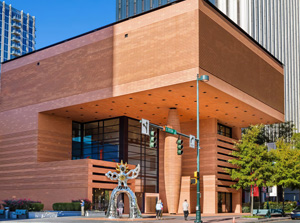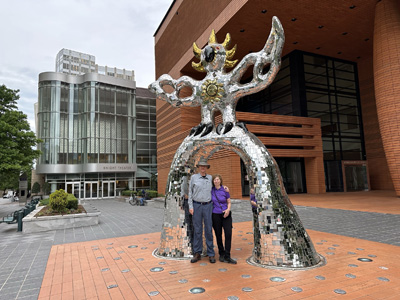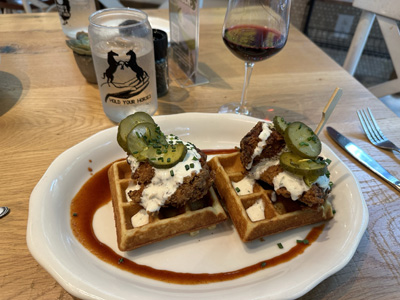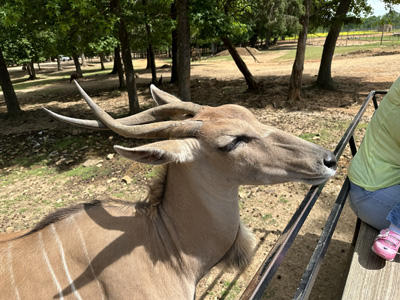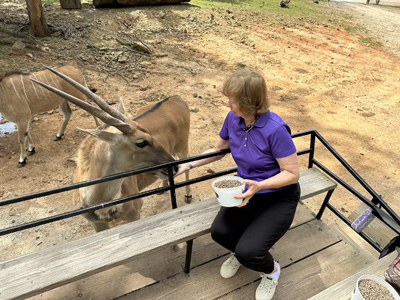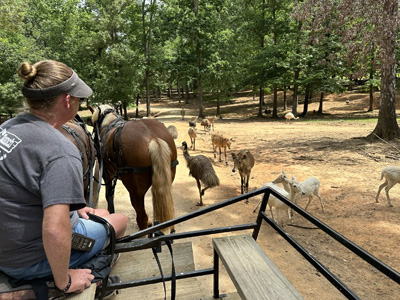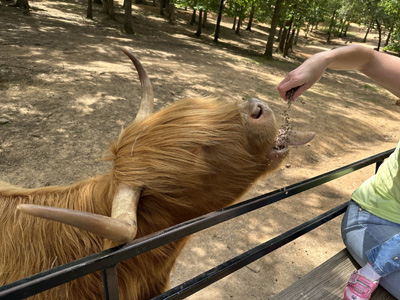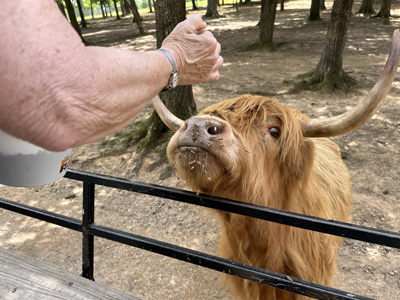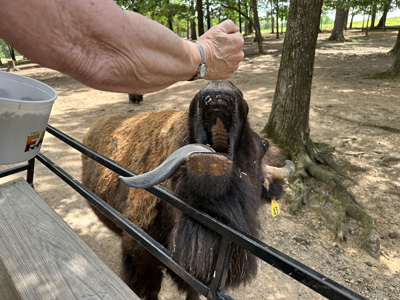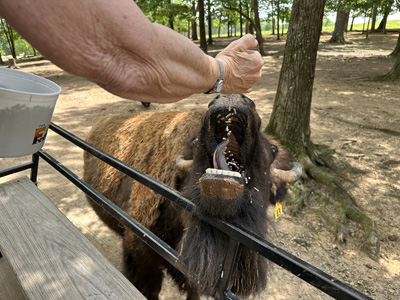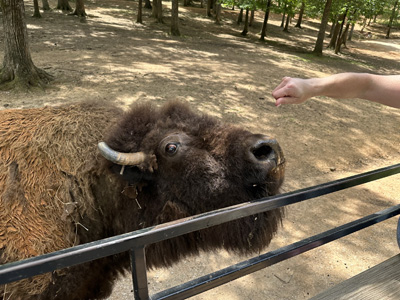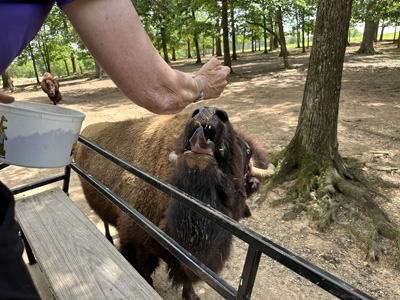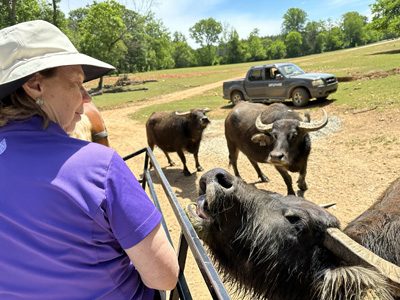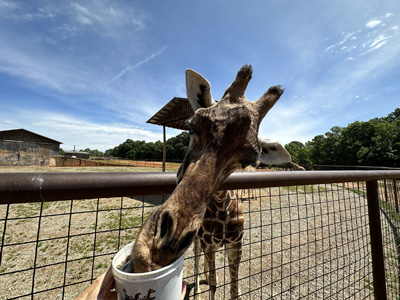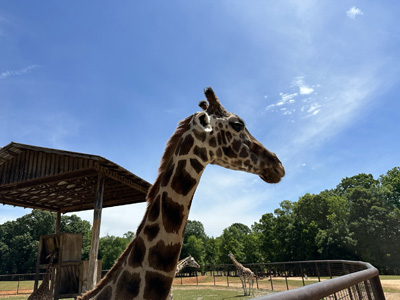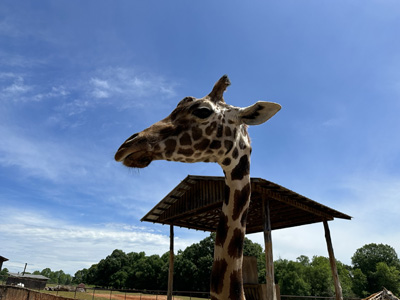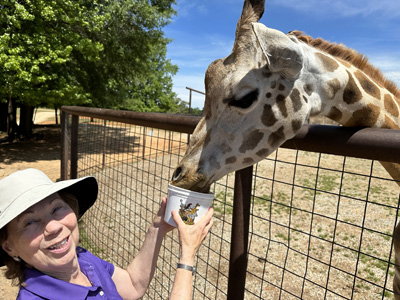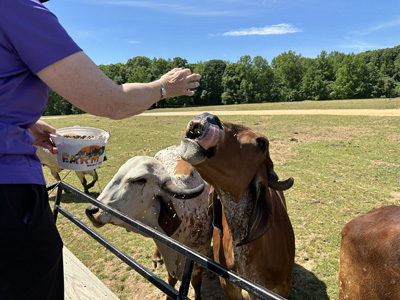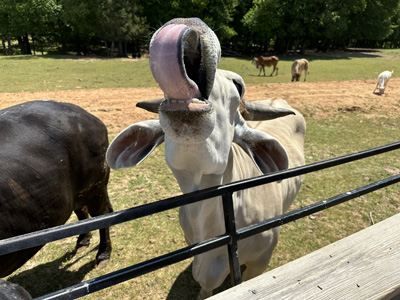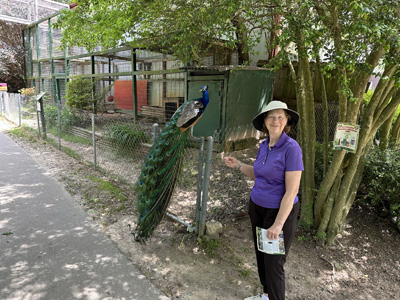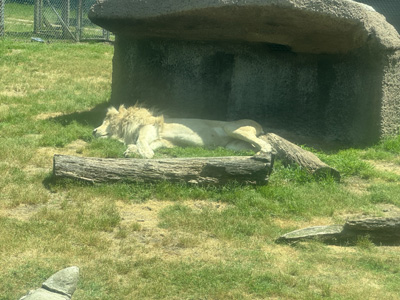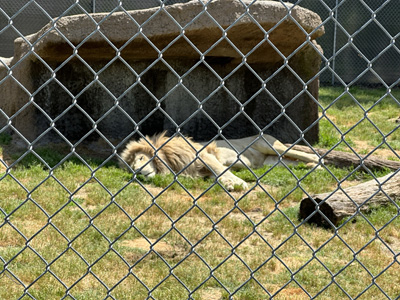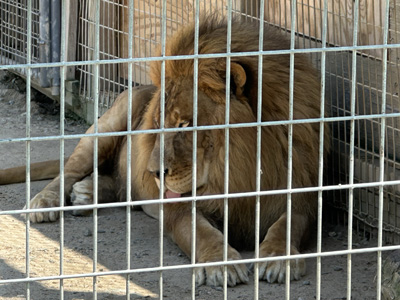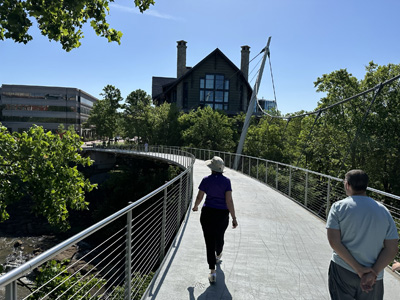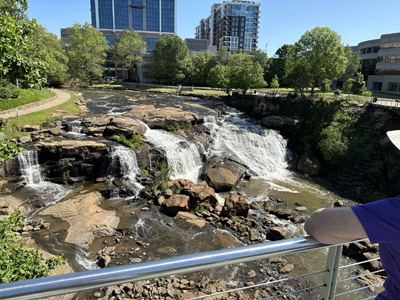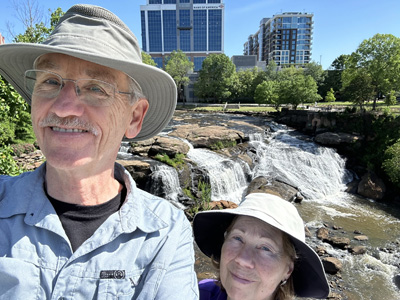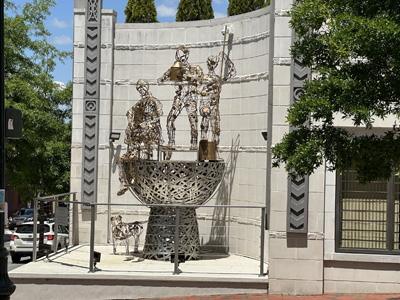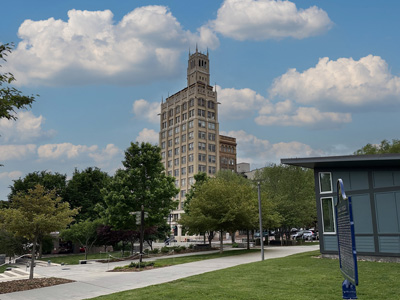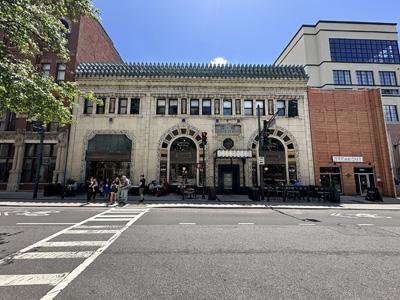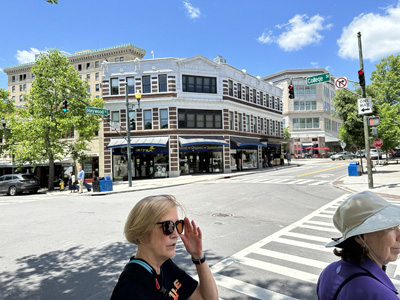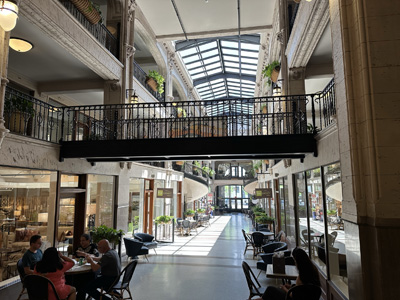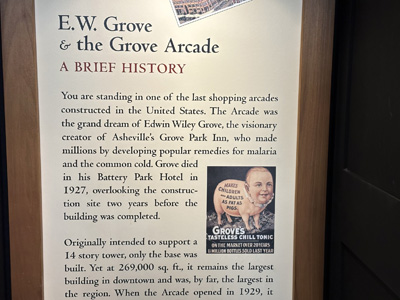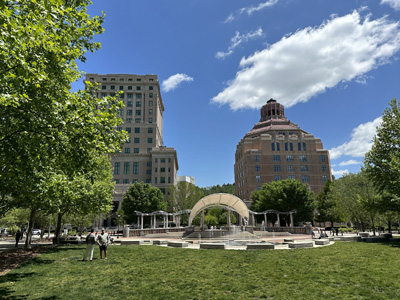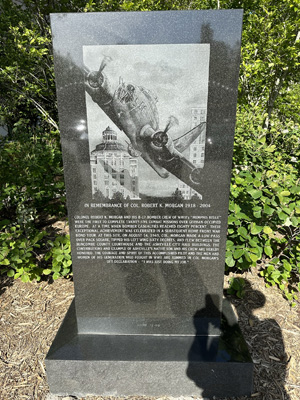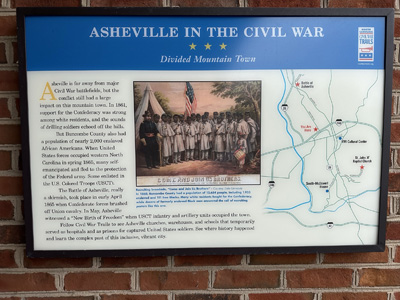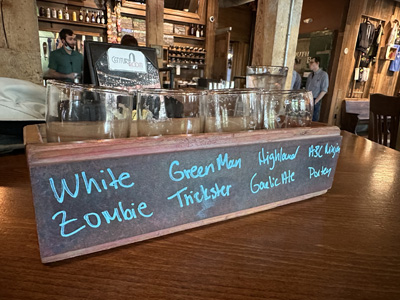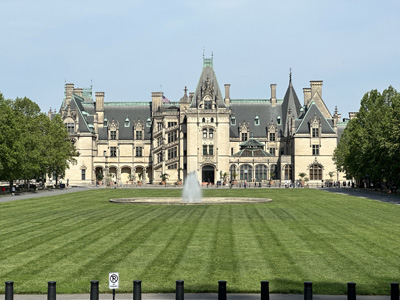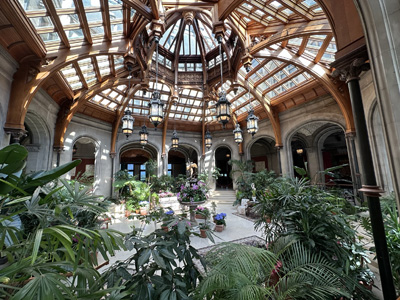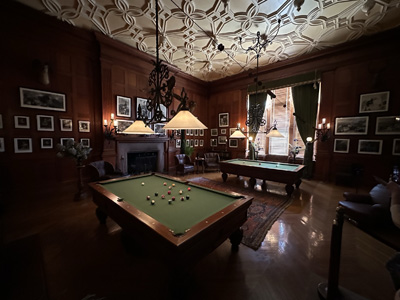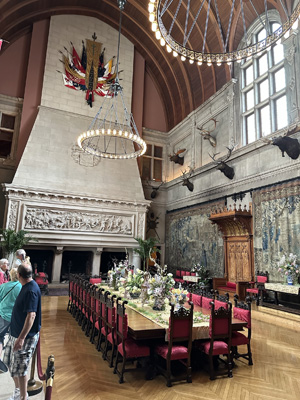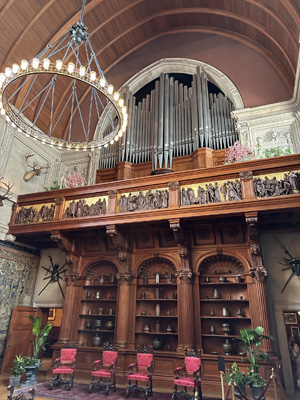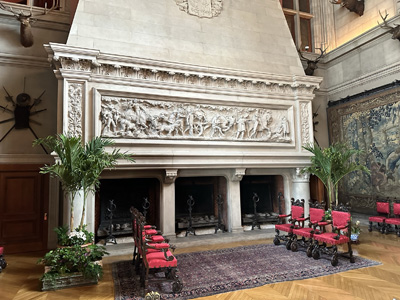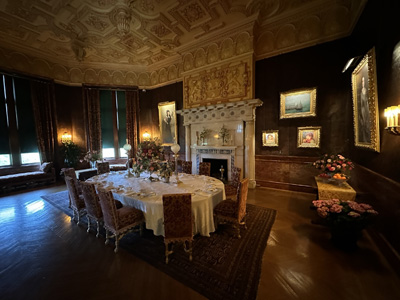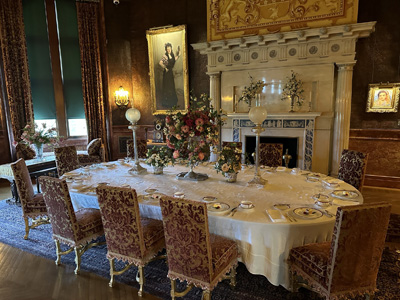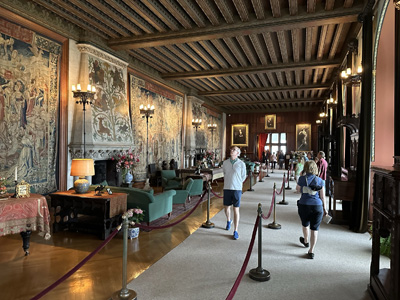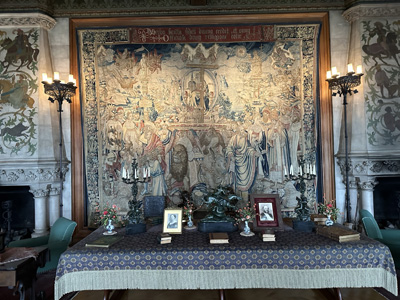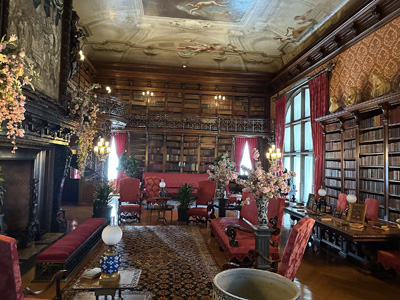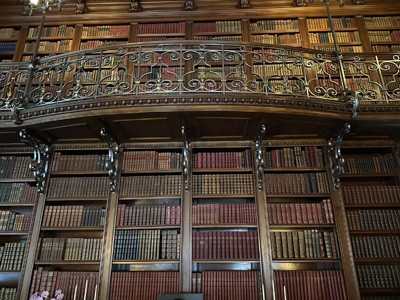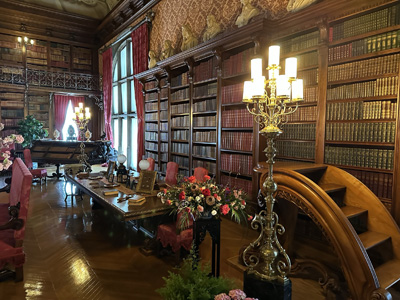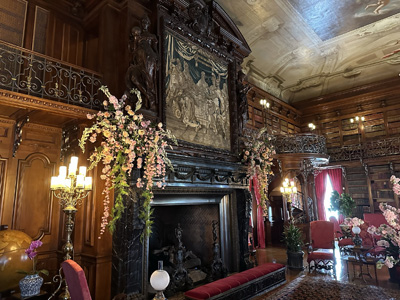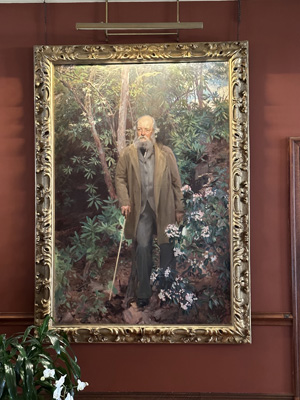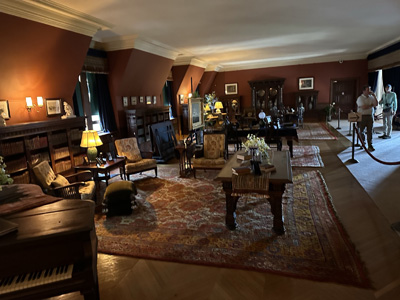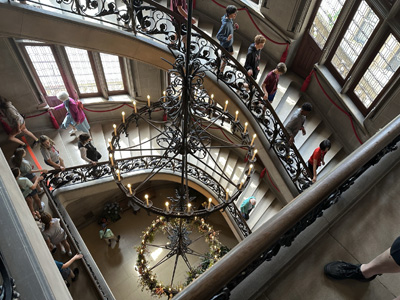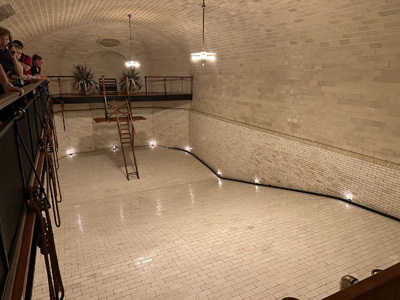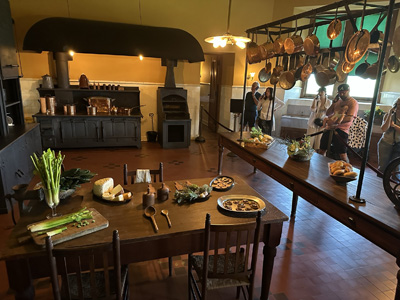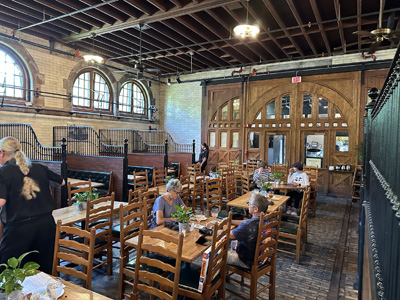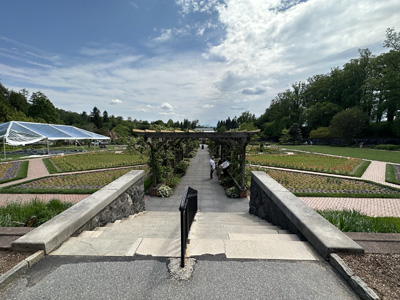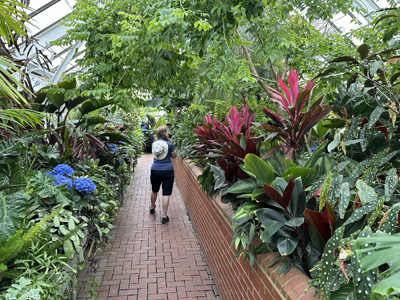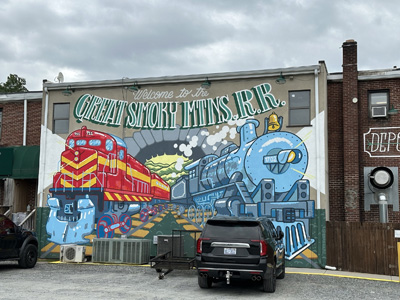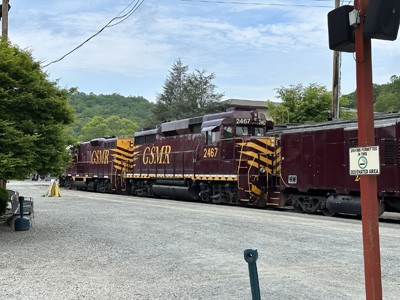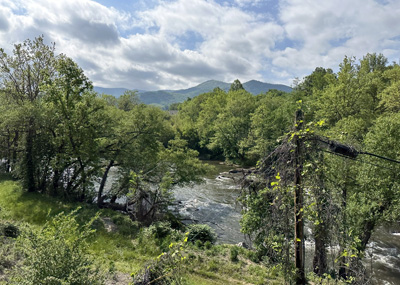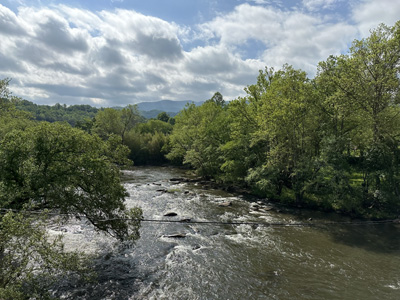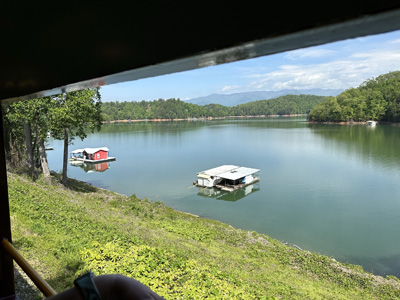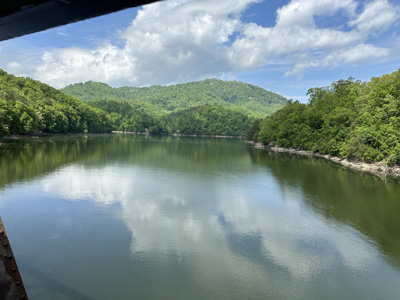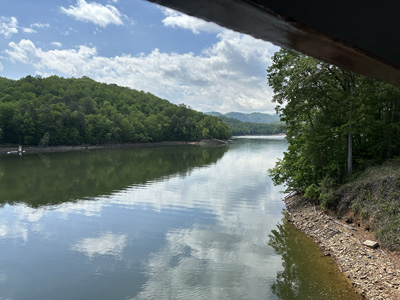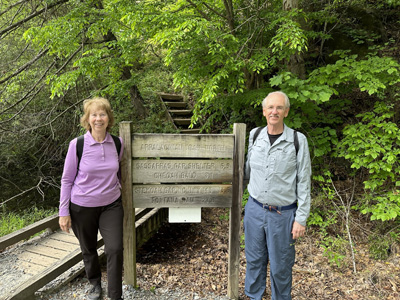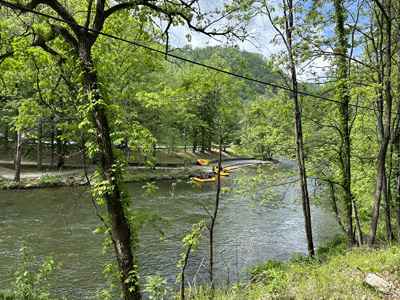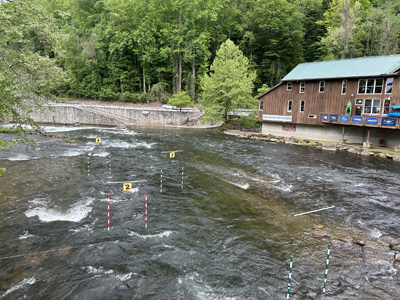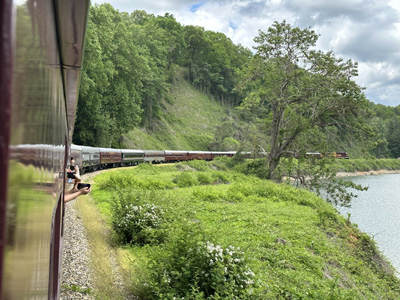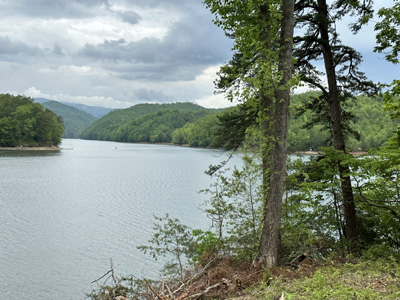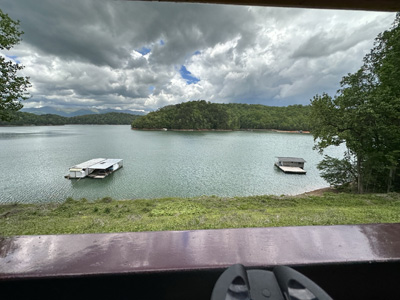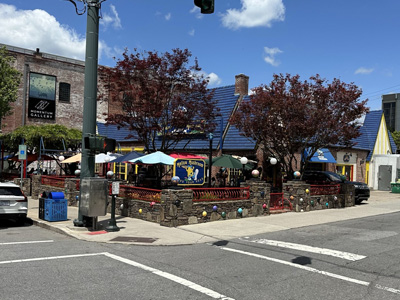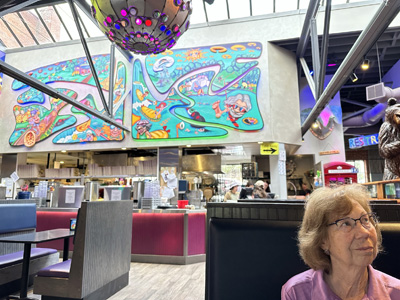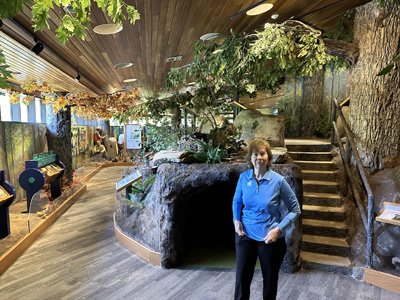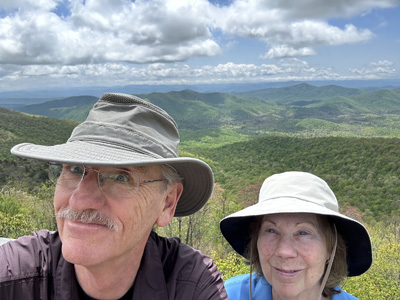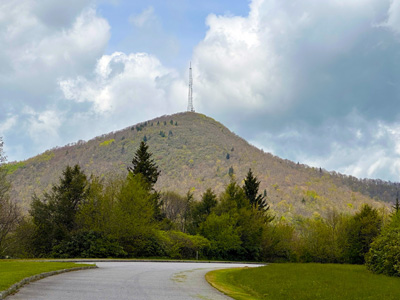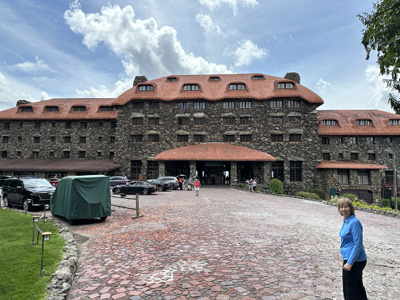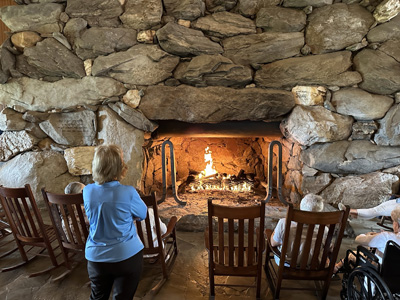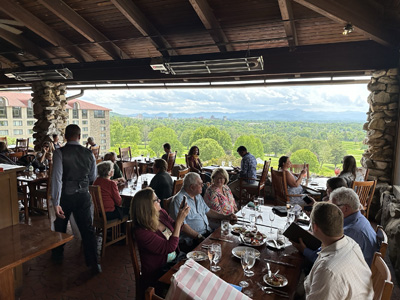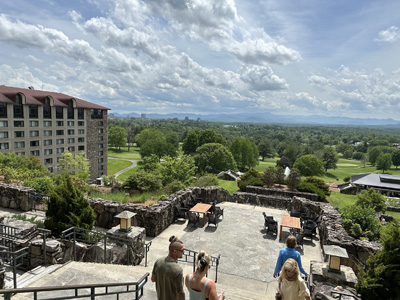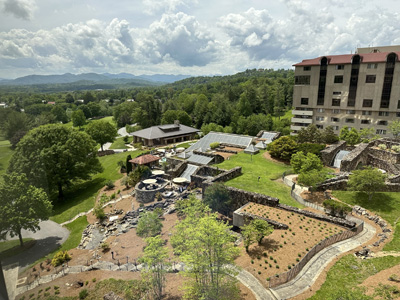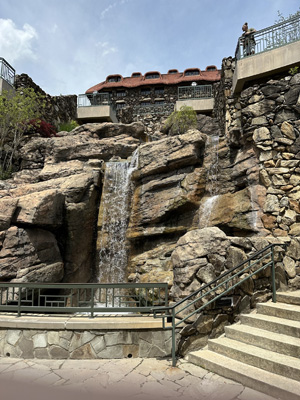Hal and Nancy’s Western North Carolina Trip, May 2023
This is my (Hal’s) report on Hal and Nancy’s visit to western North Carolina. The primary goal was a few days in Asheville, but since we had to fly to Charlotte, we started with a couple of days there. We considered taking a Road Scholar excursion to Asheville, but decided that their program was a bit too leisurely and that we could accomplish everything on their itinerary on our own, plus the extended stop in Charlotte.
Sunday, May 7 — to Charlotte
We flew American Airlines direct to Charlotte. We drove to the Kimpton Tryon Park hotel, which is an extremely comfortable downtown hotel adjoining Romare Bearden Park. Dinner was at Mellow Mushroom a block away, one of my favorite pizza chains.
Monday, May 8 — Charlotte
We booked a morning tour with the group ToursByLocals, which we had used previously on our trip to Denver. Our guide Ruben (a former Russian chemical engineer) met us at the hotel and we started with a walking tour of downtown, although it’s not called that here—it’s Uptown, which is derived from the modest hill it stands on. We heard a bit about local history of the Queen City (named after Charlotte of Mecklenburg, wife of George III) and economic development as we explored Liberty Square, the Museum district, frescoes by Benjamin Long, and a few nice parks. There is some interesting American Revolution history here, and we also saw a church that Jefferson Davis attended as his failed government fled south from Richmond in 1865. Charlotte is the country’s second largest financial center now that BofA moved its headquarters here and there is also a big presence by Wells Fargo. Uptown is immaculately clean, but eerily quiet. They’re still recovering from Covid. Lots of very upscale hotels and restaurants, but oddly very few retail stores and virtually no touristy shops.
Next we got in Ruben’s car for more touring. We explored the Fourth Ward, where many of the old quaint homes were transplanted here. The Brooklyn Village area was once a poor Black residential area, but urban renewal ejected them and replaced them with a county municipal center. We saw a couple of nice sports stadiums, which would normally make our hotel area much busier. The NODA (North of Davidson) district used to be covered with textile mills, but is an emerging residential center, with lots of loft and apartment construction. We saw very pleasant residential areas in Plaza Midwood, Eastover, and the South End. All in all this tour was quite informative; we never would have seen some of these areas otherwise.
After lunch we visited the Bechtler Museum of Modern Art. The main exhibit was Europe in the Age of Picasso, mostly non-Picasso artists with works from the 50s and 60s. We watched a fascinating film, about an hour long, of Yasumasa Morimura imitating a dozen famous artists of history and commenting on their self-portraits. Superb makeup and costumes. Hard to imagine a Japanese man looking like Frida Kahlo or Da Vinci, but he pulled it off. There was also an interesting mechanical/kinetic statue/mobile by Jean Tinguely, although a much larger one of a similar nature is in the lobby of a nearby office building, the Carillon Tower. This museum was one of the only ones Uptown that does not close on Mondays.
Dinner at Tupelo Honey, a chain restaurant that we coincidentally also found on our Denver trip. I had “Asheville hot” fried chicken and Mac-and-cheese waffles. Good, but not as spicy as “Nashville hot.”
Tuesday, May 9 — Animals
Today was a much busier day on Uptown streets and sidewalks, so apparently local business employees are doing a lot of remote work on Mondays. We drove north past the town of Mooresville (small but notable as it is heavily into NASCAR racing) to the Lazy 5 Ranch, where we had a nice mid-day communing with animals. We booked a ride on a horse-drawn wagon—dual Percherons—to wind through the woods and observe and feed antelopes, sheep, potbelly pigs, emus, giraffes, bison, water buffaloes, Scotch Highland cattle, Watusi, Brahmas, elands, mountain goats, and fallow deer. The large four-legged critters came up and stuck out their tongues while we dropped feed pellets in their mouths; smaller ones slurped the pellets from our hands. There were zebras on the course, but they were too aggressive to feed. One of the giraffes decided she liked the taste of my shirt and slimed me. For those not on a pre-booked wagon, they could drive their own cars through a slightly different course, but I think we made the better choice. We also walked around and saw lots of peacocks, some black swans, lemurs, geese, and a number of pigeon varieties for some reason.
In the afternoon we drove east to visit Tiger World, which was rather disappointing. It was a ramshackle collection of enclosures with some very tired big cats and a small variety of other animals, large and small, frequently hiding from view. We had arrived in time for an educational tour advertised on their website, but the small print was that advanced reservations were required, so we self-guided and probably missed some stuff.
We had dinner at La Belle Helene, a bustling French bistro. I flustered the waitress by ordering in French (about my only skill in that language), but the service and food were excellent. Just quite loud with a businessman-focused clientele.
We had a positive impression of Charlotte and its people—it would probably be a nice place to live if you can stand summer heat—but it is not really a tourist Mecca and we found limited things to do there.
Wednesday, May 10 — Greenville and Asheville
We left Charlotte early and drove to Greenville, SC. It was sort-of on the way to Asheville and we decided to break up the trip, with about two hours for this first leg. I had seen some photos of Reedy Falls Park and wanted to see it in person. It’s a delightful little downtown, shady with cute shops and restaurants. The waterfalls are really nice, very picturesque.
The drive to Asheville was about 75 minutes. Once again we booked with ToursByLocals and a local lady named Sue (a retired nurse) was our guide for a walking tour of downtown. We saw lots of Art Deco buildings (AV is second only to Miami Beach for the number of these buildings) that were once department stores and other utilitarian places and are now art galleries, wine bars, food courts, hotels, etc. One nice example of this is the Grove Arcade, with a section that looks right out of Milan. We saw the Jackson Building, which was the first skyscraper erected in Asheville, 13 stories on a very narrow footprint. We heard about AV’s prominence in the microbrew community—more microbreweries per capita than anywhere else, Sue said. (Since the city population here is only 90,000, that is plausible.)
We were impressed to hear the story about Robert K. Morgan, the Asheville-native pilot of the famous Memphis Belle, who was on a bond tour in 1943 and flew his B17 between the city hall and the county building, so close together that he had to tilt his wings 60° to fit. There is a plaque commemorating this, but sources on the internet disagree on the details or even existence of this stunt. Another plaque documents a Confederate armory here, which manufactured Enfield rifles until 1863. There was also a battle/skirmish a little north of here on April 6, 1865, and Stoneman’s Raid hit the town a few days later. We also spent some time at the Benjamin Walls photo gallery, featuring astonishing wildlife and nature panoramas.
Our hotel is the Hilton Garden Inn, which is a few blocks east of the main downtown. Comfortable enough, with a rooftop bar (but not a killer view with buildings in between you and the mountains). We stopped at Pack’s Tavern for a flight of four local beers. This is an interesting place because it is connected to the adjacent police station with a tunnel. During Prohibition, cops would seize illegal liquor and then surreptitiously transport it underground to the tavern to sell it. Dinner was at a place called Rhubarb, which is a farm-to-table restaurant that is pretty vegan friendly. We were intimidated by the odd menu choices—celery root schnitzel or ramp sausage, anyone?—but the food was excellent.
Thursday, May 11 — Biltmore
Today was an all-day visit to the Biltmore estate. We had 10 AM reservations for the audio tour of the mansion and enjoyed it (despite the $90 tickets, although to be fair, they covered the entire day of activities). We toured three floors for almost two hours and saw some amazing rooms and décor. I was particularly impressed by the gigantic dining room, 70 feet long, and the library, packed in with about half of George Vanderbilt’s 24,000 volumes. There is also a two-lane bowling alley and a large indoor pool. We only scratched the surface of its 250 rooms and 179,000 square feet, the largest privately owned house in America. A lovely view of the Blue Ridge Mountains is waiting on the rear balcony. The grounds, designed by Frederick Law Olmsted, are beautiful and go on forever.
We drove 5 miles across the estate to where I had a reserved complimentary wine tasting at Biltmore Cellars, which is somehow the most visited winery in the US. There is a huge retail store and I found the five wines I tasted to be quite good and reasonably priced. There are about 50 acres of vines here on the property, so many of their dozens of wines are based on grapes imported from the West Coast. While I tasted, Nancy visited a museum about the history of the Vanderbilt family. We looked around farm and craft exhibits at Antler Hill Village, and then returned to the mansion, where we lunched next door in the Stable Café. The old stable building is quite luxurious by horse standards. We roamed through the large formal gardens and conservatory to round out the afternoon. It took almost a half hour to drive on the woodsy winding roads to reach the exit.
Dinner was at Buxton Hall, which some rate the best barbecue place in AV. They specialize in pulled pork, butchered on the premises, an industrial setting that was originally a skating rink. They have a sauce bar with both eastern NC vinegar-based and western red/ketchupy, in regular and hot forms. Excellent sides including “chicken bog” (a low country pilaf made with rice, chicken, and sausage) and corn pudding. Salted honey and chocolate chess pies for dessert.
Friday, May 12 — Great Smoky Mountains Railroad
Today we drove to Bryson City, NC, about 70 minutes west, to catch the Great Smoky Mountains Railroad. We reserved seats in an open-air car with bag lunches, but the majority of passengers were in enclosed dining cars with full service. Steam trains operate in the summer, but ours was a dual-engine diesel. We started along the Tuckasegee River and it soon fed into Fontana Lake, a reservoir created in WWII for electricity production needed for some Alcoa aluminum plants and the secret Manhattan Project site at Oak Ridge, Tennessee. There were at least three small town submerged to fill the reservoir, for which the hapless residents were compensated $0.25/acre. Some were given floating houses (anchored without motors), which are still there along with lots of pleasure boats. Two other rivers feed into the 17-mile-long lake: the Little Tennessee and the Nantahala.
We continued through the Nantahala Gorge until we reached mile 22 and there the locomotives were transferred to the other end of the train and we headed back. There was a one-hour stop at Nantahala Outdoor Center, which is a bustling little collection of businesses sponsoring river rafting, hiking, etc. There are some class 3 rapids there and we also saw a kayaking slalom course. So the whole excursion was 4.5 hours, which made for a very enjoyable day. We lucked out on the weather, because when it rains the open car is, well, open.
Back in Asheville, we dined at another Mellow Mushroom. Don’t blame me for this: Nancy suggested it. This was even wilder/psychedelic in its décor than what I usually encounter; it’s housed in a former gas station. We had planned to stop by the Friday night drum circle downtown, but it was a little rainy, so we skipped that, but it’s supposed to be a hoot.
Saturday, May 13 — Blue Ridge Parkway
We drove to the visitor center for the Blue Ridge Parkway, just to the east of town, and got some weather advice, dealing with early morning low overcast conditions. Based on this, we swung around to the southeast toward Brevard on regular roads and stopped at the “Cradle of Forestry in America,” which is the location at which Dr. Carl Schenck founded his Biltmore School of Forestry. Vanderbilt hired him from Germany to manage his vast holdings in the Pisgah Forest and try to make a profit. Forests in the late 19th century were declining from mismanagement and over-harvesting. Schenck developed and taught practices that were later adopted by the US Forest Service and most states. The visitor center has a number of interesting exhibits and an excellent 30-minute history film. There are also a few walking trails, but we decided to head out on the Parkway nearby—the weather had pretty much cleared up. By the way, on the way up to the Cradle, we were delighted to see 17 Ferraris in a relatively low speed parade.
Our first and only stop on the ridge was at the Pisgah Inn for lunch. Afterward we drove north on the Parkway, passing Mount Pisgah (which looks to be a rather challenging hike), through lots of tunnels, and stopping briefly at a few of the many scenic overlooks. The scenery below of miles and miles of hills and mountains covered by dense forests is just spectacular. We rounded out the day by visiting the Grove Park Inn, a historic property expanded into a giant resort by Omni Hotels. Very flashy, constructed of huge stones, with a classic lobby reminiscent of the Ahwanee or Yellowstone Lodge. There are photos posted of just about any celebrity you can think of, past visitors.
Our final dinner of the trip was downtown at Asheville Proper, specializing in wood-fired meats. It was an excellent restaurant.
Sunday, May 14 — Heading Home
Happy Mothers' Day. We drove to the River Arts District and wandered around a little. We were hoping to see some interesting street art murals, but came up short, and since this was Sunday morning, every art gallery and café was closed. Heading east, we stopped briefly in the town of Black Mountain, which was mentioned in a travel magazine. It looked pleasant, but not very exciting. Then it was a two-hour drive to reach the Charlotte airport, where we had plenty of time to find lunch and take a 3 PM flight back home. We had a very nice time on our trip and got a good feel for Western North Carolina.
